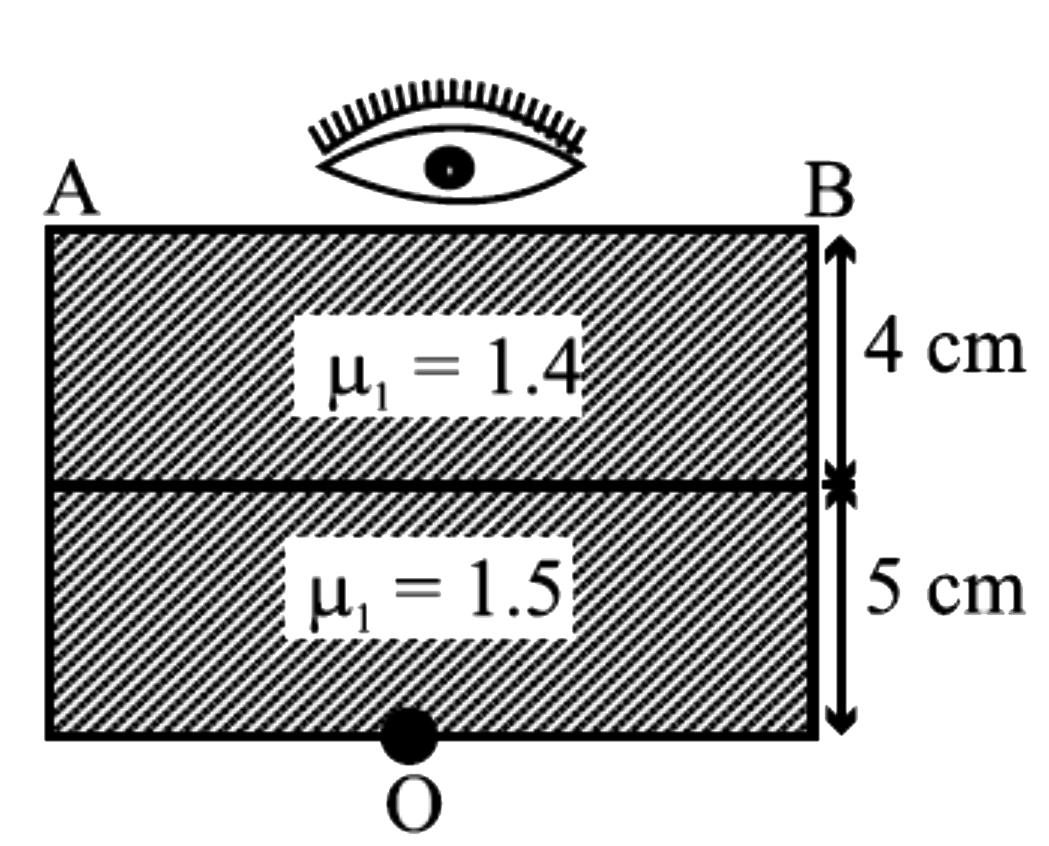An object lies 100 cm inside water . It is viewed from air nearly normally. Find the apparent depth of the object.
To solve the problem of finding the apparent depth of an object submerged in water when viewed from air, we can follow these steps:
1. Identify the Given Values:
- Actual depth of the object in water, D=100 cm.
- Refractive index of water, μwater=43.
- Refractive index of air, μair=1.
2. Use the Formula for Apparent Depth:
The formula to find the apparent depth (D′) when viewing from a medium of different refractive index is given by:
D′=D×μairμwater
3. Substitute the Values into the Formula:
Substitute the known values into the formula:
D′=100cm×143
4. Simplify the Expression:
Simplifying the fraction:
D′=100cm×34
5. Calculate the Apparent Depth:
Now, perform the multiplication:
D′=100×0.75=75cm
6. Final Answer:
The apparent depth of the object when viewed from air is D′=75 cm.
Summary:
The apparent depth of the object is 75 cm.
- Actual depth of the object in water, D=100 cm.
- Refractive index of water, μwater=43.
- Refractive index of air, μair=1.
The formula to find the apparent depth (D′) when viewing from a medium of different refractive index is given by:
D′=D×μairμwater
Substitute the known values into the formula:
D′=100cm×143
Simplifying the fraction:
D′=100cm×34
Now, perform the multiplication:
D′=100×0.75=75cm
The apparent depth of the object when viewed from air is D′=75 cm.
The apparent depth of the object is 75 cm.
Topper's Solved these Questions
- GEOMETRICAL OPTICSBOOK - CENGAGE PHYSICS ENGLISHCHAPTER - GEOMETRICAL OPTICSEXERCISE - Solved Examples
15 Videos
- GEOMETRICAL OPTICSBOOK - CENGAGE PHYSICS ENGLISHCHAPTER - GEOMETRICAL OPTICSEXERCISE - Exercise1.1
14 Videos
- ELECTRON,PHONTS,PHOTOELECTRIC EFFECT & X-RAYSBOOK - CENGAGE PHYSICS ENGLISHCHAPTER - ELECTRON,PHONTS,PHOTOELECTRIC EFFECT & X-RAYSEXERCISE - dpp 3.3
15 Videos
- HEATING EFFECT OF CURRENTBOOK - CENGAGE PHYSICS ENGLISHCHAPTER - HEATING EFFECT OF CURRENTEXERCISE - Thermal Power in Resistance Connected in Circuit
27 Videos
Similar Questions
Knowledge Check
A fish which is at a depth of 12 cm in water (μ=43) is viewed by an observer on the bank of a lake. Its apparent depth as observed by the observer is :
A3 cmB9 cmC12 cmD16 cm
There is small air bubble inside a glass sphere (μ=1.5) of radius 5cm. The bubble is at 'O' at 7.5cm below the surface of the glass. The sphere is placed inside water (μ=43) such that the top surface of glass is 10cm below the surface of water. The bubble is viewed normally from air. Find the apperent depth of the bubble.
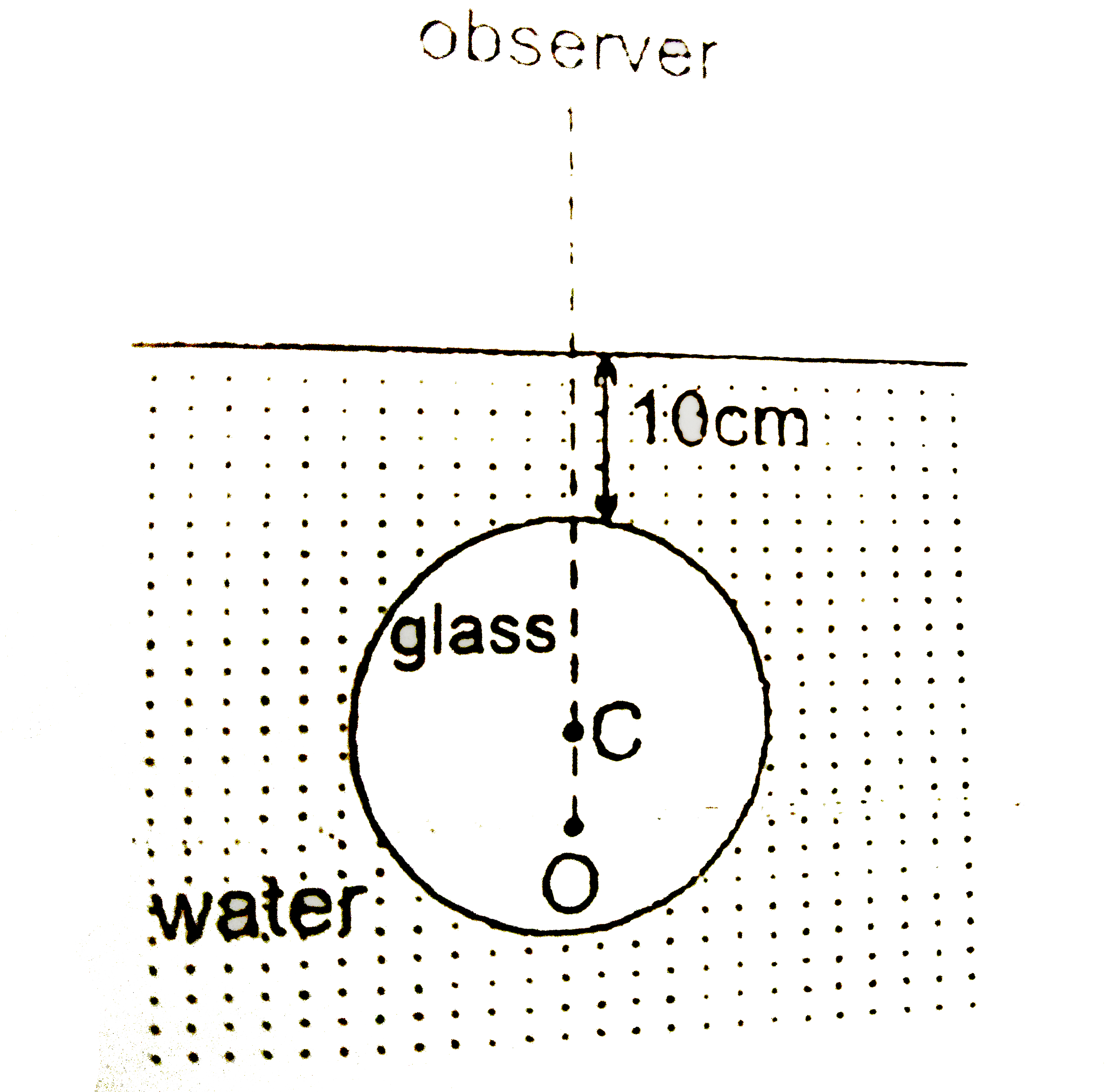
View SolutionA coin kept inside water (μ=4/3) when viewed from air in a vertical direction, appears to be raised by 2⋅0mm. Find the depth of the coin in water.
View SolutionIn Fig. , find the apparent depth of the object seen below surface AB.
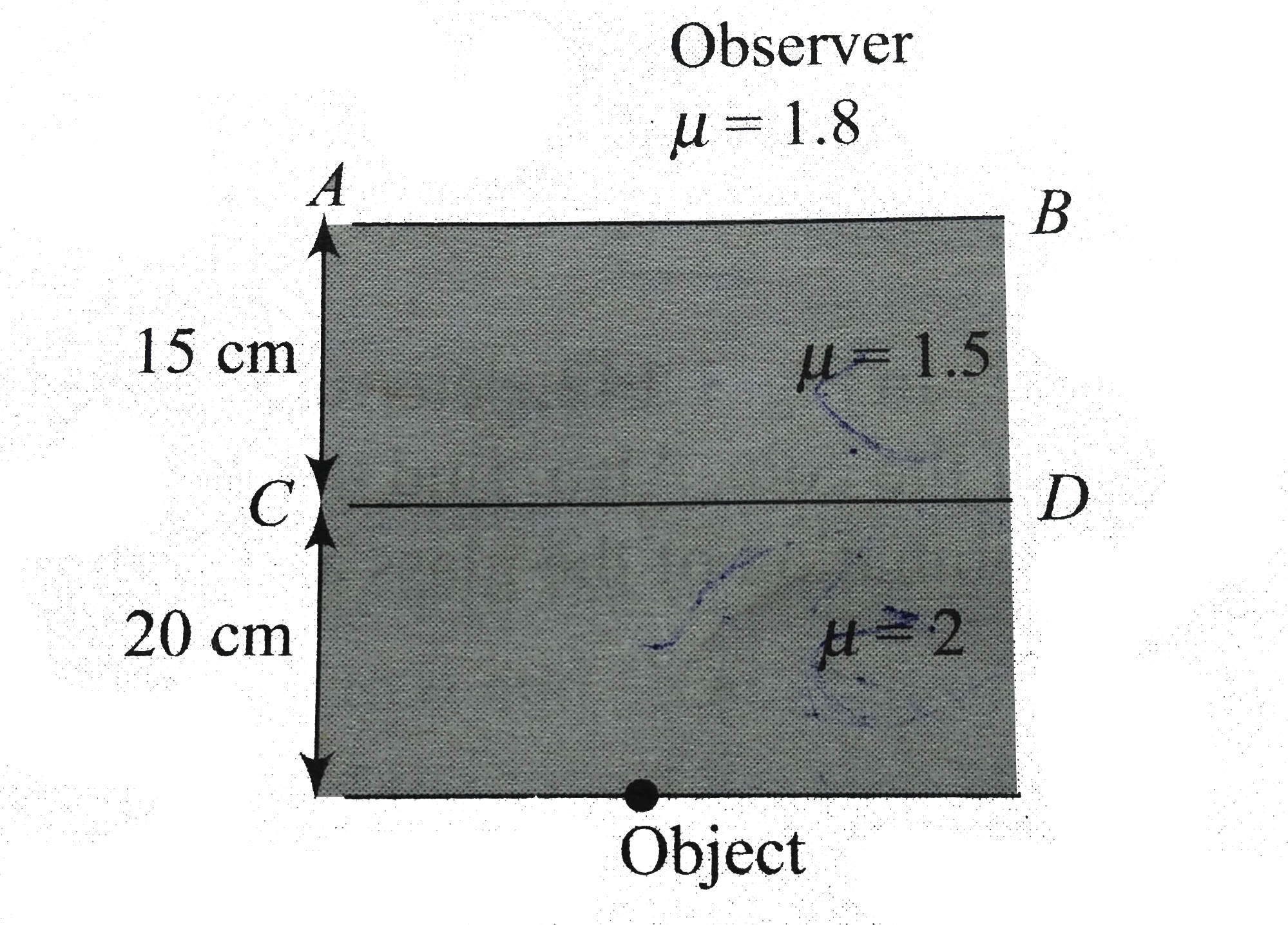
View SolutionThere is a small air bubble inside a glass sphere (μ=1.5) of radius 10 cm. The bubble is 4.0cm below the surface and is viewd normally from the outside. Find the apparent dipth of the bubble.
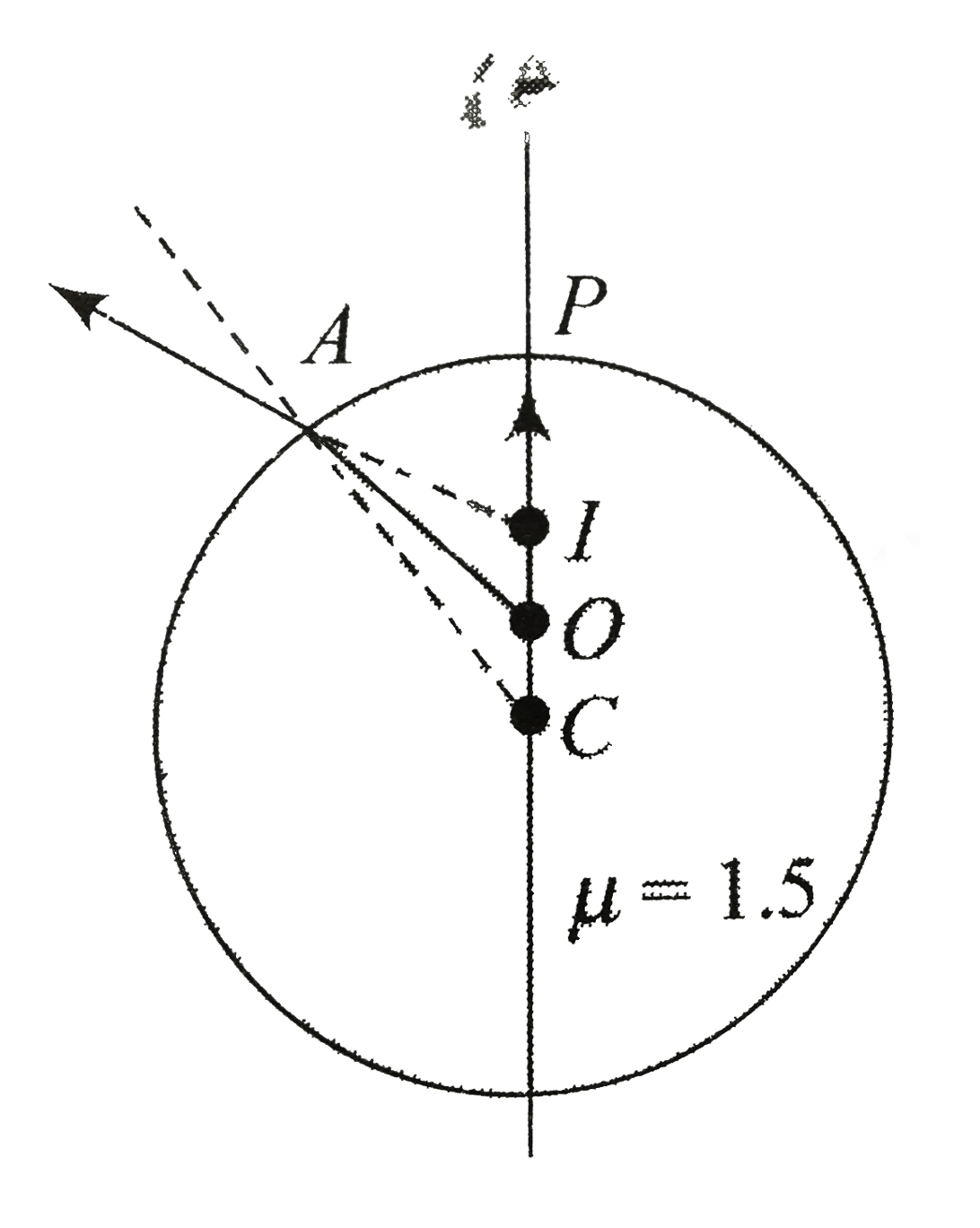
View SolutionAB is small object dipped in water at a depth of d. Its length is l. It is seen from air at near normal incidence. The length of the image is:
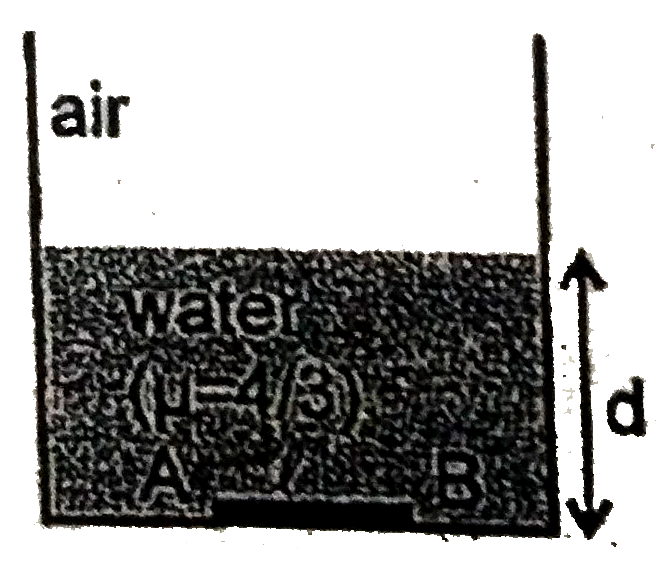
View SolutionA layer of benzene (μ=1.5) 12 cm thick floats on water layer (μ=4/3) 8 cm thick in a vessel. When viewed from the top, the apparent depth of bottom of vessel below the surface of benzene will be
View SolutionA 2 cm diameter coin rests flat on the bottom of a bowl in which the water is 20 cm deep (μw=4/3). If the coin is viewed directly from above, what is its apparent diameter ?
View Solution

